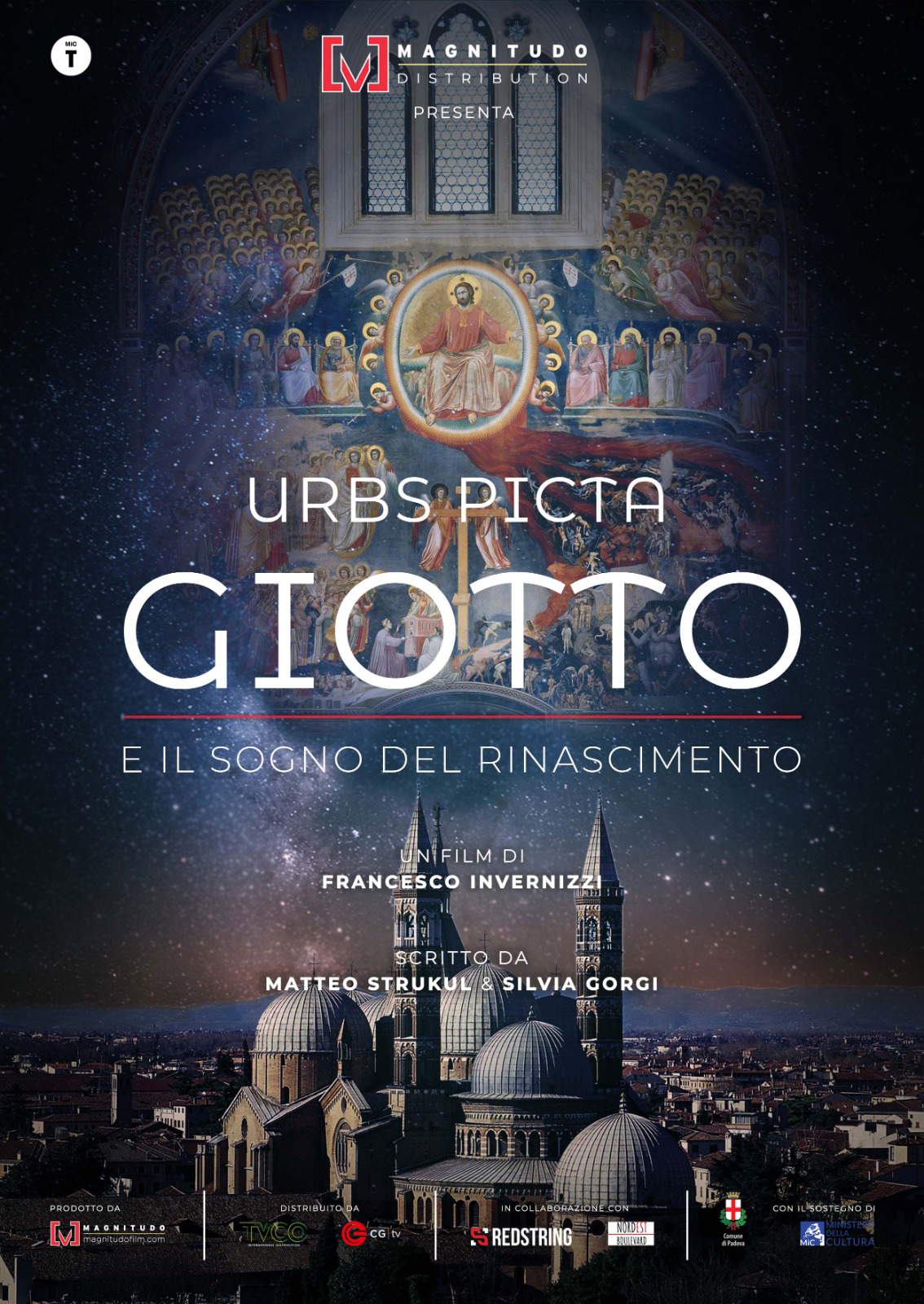From November 6, 2023, the film Urbs picta will arrive in Italian cinemas. Giotto and the Dream of the Renaissance, produced by Magnitudo Film in collaboration with Nordest Boulevard and Redstring Pictures, with narration by Fabio Gemo and soundtrack by Tommaso Ermolli and set photographer Andrea Andreetta. The film directed by Francesco Invernizzi, written and scripted by Matteo Strukul and Silvia Giorgi, aims to recount the visionary art of Giotto, a painter who revolutionized fresco painting with his own figurative narrative.
Shot with the collaboration of the City of Padua, the municipalities of Monselice, Cittadella and Arquà Petrarca, and Rossi Chauvenet’s Massimago Tower, the set also involved locations in the province of Padua, such as Cittadella, with its city walls, Monselice with the Cini Castle, and Arquà Petrarca with the poet’s house.
The documentary aims to recount the great development of 14th-century painting in Veneto that began withGiotto’s arrival in Padua. At a time when the great Signories and Maritime Republics dominated the Italian territory, artists were called upon by the powerful to decorate palaces and churches as a testimony to their influence. Giotto arrived in Padua, around 1302, at the invitation of the Friars Minor of the Basilica of St. Anthony on the instructions of the brothers from Assisi. The Carraresi family, at that time at odds with the Serenissima Republic of Venice, began a policy of culture. More and better than other important lordships of the 14th century, they moved in a cosmopolitan context, forging relationships with the major European courts. They hired into their service the leading artists of the 14th century for self-celebratory purposes and fashioned the city in their image and likeness, originating the Urbs Picta. Padua thus became a center of thought and pictorial art, attracting such personalities as Petrarch in addition to those already named, and in the 15th century, Leon Battista Alberti, Cosimo de’ Medici, Donatello, Paolo Uccello, and Palla Strozzi, effectively anticipating the Renaissance.
“I had long wanted to inscribe Giotto’s name among the most rigorous contemporary documentary productions,” said director Francesco Invernizzi. “The narrative structure and the rigor of the images make the most of the pictorial heritage contained in such absolutely beautiful caskets as the Scrovegni Chapel, the Oratory of San Giorgio, the Chapel of San Giacomo al Santo, and the Palazzo della Ragione. I wanted on the one hand to enhance the vision of his art through the use of 8K cameras and natural light, and on the other hand to respect and indulge the breathtaking beauty of the gigantic, admirably frescoed surfaces, the brilliance of colors and glazes, and the astonishing choreographic arrangement of the figures conceived by Giotto, Altichiero da Zevio, Guariento d’Arpo, and Giusto de’ Menabuoi, to name but a few of the artists. I have drawn from it a choral narrative, celebrating central figures in the history of art and even literature-thanks to the patronage of the Carrarese dynasty-such as Giotto, the painter who revolutionized fresco painting with his own breathtaking figurative narrative, Francesco Petrarch, a genius of poetry who found his safe harbor in Padua; Giovanni Pisano, a master of sculpture and innovator of classical statecraft; and Pietro d’Abano, a philosopher, physician, astrologer and necromancer in the odor of heresy. Thanks to the authorial collaboration with Matteo Strukul and Silvia Gorgi, I was able to embark on fascinating artistic digressions by immersing them in refined historical reconstructions. The compelling narrative lines come together in a visual blend out of the ordinary perc hè capable of guaranteeing an intimate and emotional involvement in the fourteenth-century Middle Ages: an authentic immersive experience in the beauty of Paduan, Venetian and Italian Art and History for me and, I hope, for those who will want to meet at the cinema a Giotto as never shown before.”

 |
| At the cinema the film about Giotto's visionary art that revolutionized 14th-century art |
Warning: the translation into English of the original Italian article was created using automatic tools. We undertake to review all articles, but we do not guarantee the total absence of inaccuracies in the translation due to the program. You can find the original by clicking on the ITA button. If you find any mistake,please contact us.